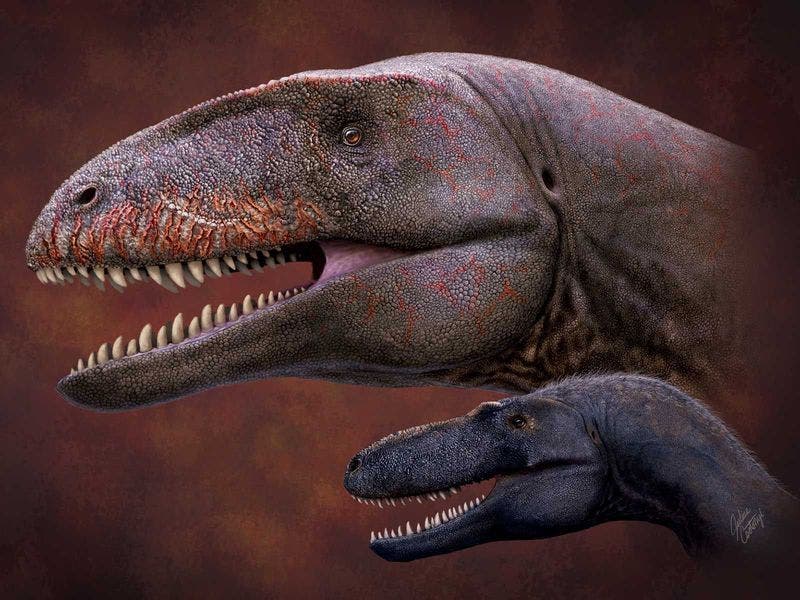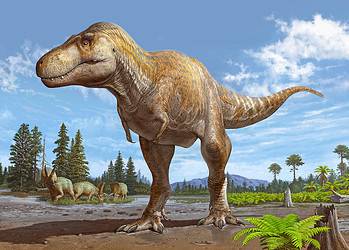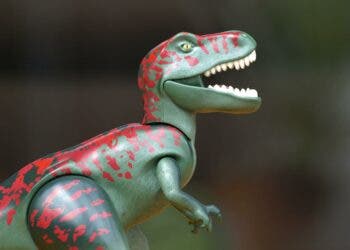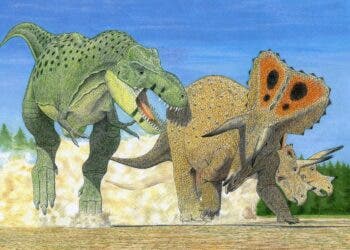
The prototypical predator during the age of dinosaurs in most people’s imagination is the mighty Tyrannosaurus rex. But before its lineage could rise to the top of the food web, another rival group of predators known as the carcharodontosaurs dominated the landscape. After reexamining a jawbone fragment stashed away for decades in an Uzbekistan museum, paleontologists now claim they’ve identified a new species of Carcharodontosaurus that would’ve given T. rex a run for its money.
In the shadow of a giant
Ulughbegsaurus uzbekistanensis, named so after a sultan mathematician who ruled over what is now Uzbekistan during the 15th century, was an absolute unit. It measured 8 meters (26 feet) in length and weighed nearly a ton (2,200 pounds), terrorizing Central Asia about 90 million years ago.
“Carcharodontosauria is a group of medium to large-sized predatory theropods, distributed worldwide during the Cretaceous. These theropods were probably the apex predators of Asiamerica in the early Late Cretaceous before the ascent of tyrannosaurids, although few Laurasian species are known from this time due to a poor rock record,” researchers wrote in their study.
T. rex‘s reign started much later, during the late Cretaceous Period some 65 million years ago, but U. uzbekistanensis likely shared the playing field with other tyrannosaurids. However, the latter were kept in check by carcharodontosaurs. For instance, Timurlengia, a tyrannosaur from Central Asia that lived around the same time as U. uzbekistanensis weighed a measly 170 kg (375 pounds) and didn’t grow larger than 4 meters (13 feet) in length. That’s still ferocious by today’s standards, but the clash between the two would have been as pointless as a coyote taking on a grizzly bear.
Although there are many similarities between tyrannosaurs and carcharodontosaurs, there are also some notable differences. One of the most important distinguishing features of carcharodontosaurs is their shark-like, serrated teeth.
These teeth like knives were evident in the upper jaw fragment discovered in Uzbekistan’s Kyzylkum Desert, in a 90-million-year-old geological formation where paleontologists previously unearthed duckbill dinosaurs, sauropods, horned dinosaurs, and many others.
Scientists had previously found other examples of concomitant tyrannosaur and carcharodontosaur fossils, but U. uzbekistanensis represents the earliest such relationship and may help piece together the timeline in which carcharodontosaurs passed the torch to tyrannosaurs as the world’s leading predators.
But many questions still remain, chief among them being why the carcharodontosaurs would ever abdicate their royal position.
In their study, which was published in the journal Royal Society Open Science, researchers at the University of Tsukuba and the University of Calgary write that severe climate change that altered prey availability may explain the rise of the tyrannosaurs, culminating with the biggest, meanest of them all: T. rex.
“The discovery of Ulughbegsaurus records the geologically latest stratigraphic co-occurrence of carcharodontosaurid and tyrannosauroid dinosaurs from Laurasia, and evidence indicates carcharodontosaurians remained the dominant predators relative to tyrannosauroids, at least in Asia, as late as the Turonian,” the scientists concluded.






